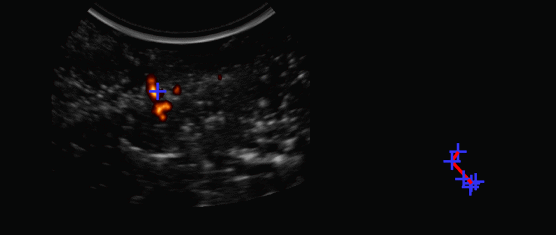Troy K. Adebar, Ashley E. Fletcher and Allison M. Okamura, Stanford University
Volume 61, Issue 12, Page:4303-4308

Percutaneous interventions involving the insertion of needles to anatomic targets within the body are applied in the diagnosis and treatment of many diseases. Robotic needle steering, a technique for inserting highly flexible needles along curved paths through tissue, has the potential to improve a variety of these percutaneous interventions. In our focus application, percutaneous radiofrequency ablation of liver cancer, robotic systems can potentially allow clinicians to steer needles around obstacles to reach previously unattainable regions, treat multiple lesions with a single capsule wound, and treat large lesions with precise ablations of arbitrary shape.
An important obstacle to the clinical adoption of needle steering is the need for medical imaging and segmentation methods that enable closed-loop robotic needle steering in realistic biological tissues. We focus on ultrasound imaging, an inexpensive, portable and safe modality that is ideal for intraoperative image guidance. Although ultrasound has many advantages, traditional B-mode ultrasound produces images with poor needle visibility. In the case of steerable needles, which are very thin and curved, it is extremely difficult for image analysis algorithms to automatically segment needles from B-mode data at real-time speeds.
In this paper, we describe the application of low-amplitude high-frequency vibration to steerable needles, in order to make them visible in 3D power Doppler ultrasound data. Experiments demonstrate that segmentation from this Doppler data is accurate to within 1 to 2 mm. We also describe an image-guided control algorithm that incorporates the segmentation data as feedback. In experimental tests implemented in ex vivo bovine liver tissue, a robotic needle steering system implementing this control scheme was able to consistently steer a needle tip to a simulated target with an average error of 1.57 mm. Implementation of 3D ultrasound-guided needle steering in biological tissue represents a significant step toward the clinical application of robotic needle steering.
Keywords: Ultrasound imaging, ultrasound Doppler, robotic needle steering, image-guided intervention
Website: http://charm.stanford.edu/Main/RobotAssistedPercutaneousInterventions

